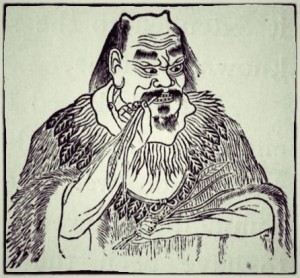Category: Warm, Acrid herbs that Release the Exterior
Taste: Acrid, Sweet Temperature: WarmChannels Entered: Heart, Lung, Bladder
Dosage: 3-9g; for decoctions, add near the end of cooking
Cautions & Contraindications:
- Contraindicated in warm-heat pathogen disease yin deficiency with heat signs, or heat in the blood with vomiting.
- Caution during pregnancy or in cases of excessive menstruation use only in doses of 6g or less, preferably dry-fried.
- Discouraged with signs of pathogenic heat.
Actions & Indications
- Releases the exterior and assists the yang: for exterior wind cold regardless of whether it is relatively deficient or excessive.
- Warms and unblocks the channels and collaterals: for wind-cold painful obstruction.
- Warms the yang and transforms thin mucus: for lack of transformation due to yang deficiency characterized by edema with urinary dysfunction or dizziness and palpitations.
- Assists the Heart yang and unblocks the yang qi of the chest: for listless chest yang together with upward movement of phlegm and thin mucus and the loss of orderly descent of the Lung qi with shortness of breath, chest pain, or palpitations.
- Warms the channels, vessels, and collaterals: removes painful obstruction and warms the blood vessels to remove stagnation and regulate the menses. Treats irregular menses and dysmenorrhea.
- Warms the middle and directs turbid yin downward: for cold from deficiency of the middle burner.
Combinations:
- Bai Shao: adjusts the ying and the wei qi for exterior invasions with sweating but no resolution.
- Ma Huang
Formulas:
- Ma Huang Tang Ephedrae Decoction
Notes:
- Useful in both excess and deficiency conditions. In cases of exterior excess, combine with Ma Huang. In unresolved cases of exterior deficiency, use Gui Zhi Tang (Gui Zhi, Bai Shao, Sheng Jiang, Da Zao, Gan Cao).
- Gui Zhi’s function of unblocking the channels is useful for conditions of generalized pain, such as fibromyalgia.
- Enters the muscle layer and functions as an envoy. Especially useful with body aches.
- Enters the channels and collaterals, and has an affinity for the limbs.
- Carries fluids downwards and outwards.
- Opens the chest. Commonly used for angina.



